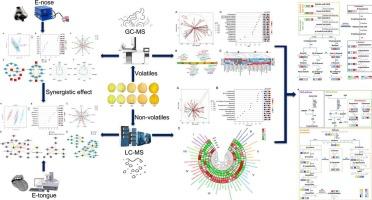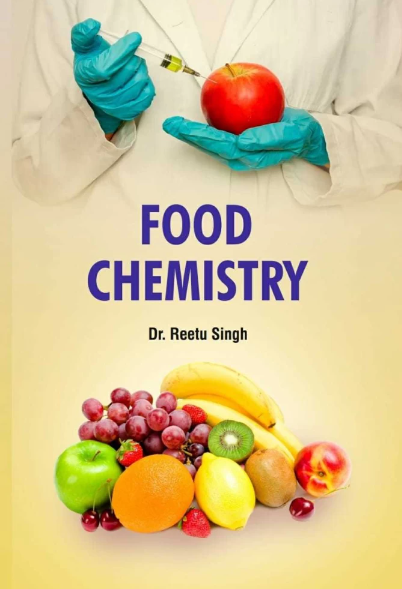Multidimensional analysis of the flavor characteristics of yellow peach at different ripening stages: Chemical composition profiling and sensory evaluation
IF 8.5
1区 农林科学
Q1 CHEMISTRY, APPLIED
引用次数: 0
Abstract
The flavor evolution of yellow peaches during ripening was investigated using a gas chromatography-mass spectrometer (GC–MS), metabolomics, and electronic sensoristic techniques. Of the 41 volatiles quantified, 13 increased the intensity of the aroma based on the odor activity values (OAVs). Additionally, 142 non-volatile compounds were identified. Metabolic pathway analysis indicated that the formation of xanthophyll esters, due to substrate competition, resulted in a reduction of carotenoid-derived volatiles. Electronic nose (E-nose) analysis revealed that the key sensor W1C-associated volatiles had a green aroma, while W1S and W2S-associated volatiles showed a fruity aroma. Electronic tongue (E-tongue) analysis revealed that L-norleucine, L-isoleucine, isoleucine, L-tyrosine, L-valine, 4-Hydroxybenzaldehyde, cinnamic acid, and rutin positively correlated with umami and sweetness. Conversely, cis-aconitic acid and (−)-epigallocatechin positively correlated with sourness or astringency. Moreover, 20 volatiles, including γ-decalactone, linalool, and (Z)-3-hexenyl acetate, were positively correlated with umami or sweetness, while 7 volatiles were positively correlated with sourness or astringency.


不同成熟期黄桃风味特征的多维分析:化学成分分析与感官评价
采用气相色谱-质谱联用技术、代谢组学和电子传感技术研究了黄桃在成熟过程中的风味演变。在被量化的41种挥发物中,有13种根据气味活性值(oav)增加了香气强度。此外,鉴定出142种非挥发性化合物。代谢途径分析表明,由于底物竞争,叶黄素酯的形成导致类胡萝卜素衍生挥发物的减少。电子鼻分析显示,关键传感器w1c相关挥发物具有绿色香气,而W1S和w2s相关挥发物具有水果香气。电子舌(E-tongue)分析显示,l -去甲亮氨酸、l -异亮氨酸、异亮氨酸、l -酪氨酸、l -缬氨酸、4-羟基苯甲醛、肉桂酸和芦丁与鲜味和甜味呈正相关。相反,顺式乌头酸和(−)-表没食子儿茶素与酸味或涩味呈正相关。γ-癸内酯、芳樟醇、乙酸(Z)-3-己烯酯等20种挥发物与鲜味或甜度呈正相关,7种挥发物与酸味或涩味呈正相关。
本文章由计算机程序翻译,如有差异,请以英文原文为准。
求助全文
约1分钟内获得全文
求助全文
来源期刊

Food Chemistry
工程技术-食品科技
CiteScore
16.30
自引率
10.20%
发文量
3130
审稿时长
122 days
期刊介绍:
Food Chemistry publishes original research papers dealing with the advancement of the chemistry and biochemistry of foods or the analytical methods/ approach used. All papers should focus on the novelty of the research carried out.
 求助内容:
求助内容: 应助结果提醒方式:
应助结果提醒方式:


